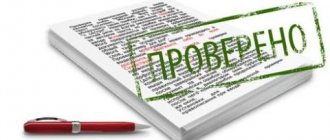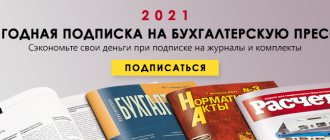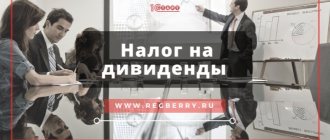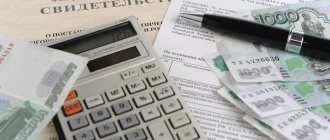In 2015, VAT optimization was actually closed
Until 2015, most enterprises, wanting to reduce the tax burden, submitted optimized declarations to the tax office, reducing or increasing VAT expenses.
After 2015, the manipulations became transparent. Optimizers can expect complaints, demands to explain existing discrepancies, additional VAT charges, penalties, blocking of accounts, transfer of materials to law enforcement agencies and criminal cases.
In order to make the control process possible, changes were made to the Tax Code, according to which taxpayers are required to submit VAT returns in electronic form and in a certain format. And the ASK VAT2 program has been prepared in advance, allowing data to be compared on a national scale. Of course, sanctions were introduced. So, since 2015, VAT returns submitted to the tax office only in paper form were considered not submitted at all. The fine in this case will be 5% of the amount of tax payable for each full or partial month of delay, but not more than 30% of the specified amount and not less than 1000 rubles. If a company is late in submitting its declaration by more than 10 days, tax authorities will be able to block its current account for 3 years.
Interdepartmental Inspectorate for Desk Control
A unified database of taxpayers stored in the data center allows you to process information as quickly and accurately as possible. This is especially true during a VAT audit, when the data of counterparties for each transaction is verified. The automated system promptly carries out reconciliations and identifies inconsistencies, while minimizing the risk of errors.
All VAT information received from taxpayers is processed by a special division of the Federal Tax Service - the Interregional Inspectorate of the Federal Tax Service for Desk Control , which was created by Order of the Ministry of Finance of Russia dated July 17, 2014 No. 61n. Its main function is to collect and analyze VAT return data, tracking all stages of the transaction from the manufacturer to the end consumer.
How the new service conducts verification
The tasks of the new division of the Federal Tax Service include:
- processing VAT returns, conducting comparative and cross-analysis of transaction data;
- identification of inconsistencies in information about transactions in the data of counterparties, which may indicate an understatement of the amount of VAT or an overestimation of the amount of tax to be reimbursed;
- identification of VAT payers who abuse the right to tax deduction .
If the amount of VAT paid by one party to the transaction corresponds to the amount accepted for deduction by the other party, no questions arise. But transactions in which, as a result of analysis, a discrepancy between the indicated amounts is revealed, are taken into account. Such transactions are subject to close scrutiny by Federal Tax Service specialists: they must determine whether tax abuse is taking place.
Regardless of whether or not the owner of a “suspicious” VAT return has malicious intent, if errors are detected, he will be sent a request for clarification . In some cases, the result of data discrepancies may be a visit from a representative of the Federal Tax Service and an on-site inspection.
Sources of information for desk audits
It is clear that these declarations are fundamental, but far from the only possible source of information in the “office room” on VAT. In accordance with the recommendations of the Federal Tax Service for conducting desk tax audits, contained in letter dated July 16, 2013 N AS-4-2/12705, inspectors can use many different sources:
- all kinds of state data registers (USRN, Unified State Register of Legal Entities, Unified State Register of Individual Entrepreneurs, CCP register, information on licenses, data on income and tax deductions of individuals, information on bank accounts and others), of which there are about fifty in total;
- data previously received from the taxpayer and third parties - statements and messages, previously filed declarations, documents received during previous tax and other audits;
- information from other departments with which the Federal Tax Service cooperates within the framework of agreements on the provision of information - extra-budgetary funds, law enforcement agencies and others.
What is ASK VAT
The automated VAT-2 control system (ASK VAT-2) was developed by the Federal Tax Service of Russia and is used to receive, record and process VAT tax return data from taxpayers. Since January 1, 2015, this system analyzes data on taxpayer invoices declared in tax returns and identifies contradictions between taxpayer invoices. So, if it turns out that the buyer has accepted VAT as a deduction, but the seller does not charge it, then this fact may become a reason for a tax audit.
Automated VAT verification: what is regulated
- In 2013, a VAT control tool was prepared. Order of the Federal Tax Service of Russia dated October 1, 2013 N ММВ-7-6/ [email protected] “On putting into commercial operation…. Automated system for monitoring VAT refunds” launched a program for monitoring VAT returns .
- In 2014, for the system came into force Federal Law No. 134-FZ of June 28, 2013 “On Amendments to Certain Legislative Acts of the Russian Federation in Combating Illegal Financial Transactions” (as amended and supplemented) introduced a number of changes to basic laws, including the Tax Code. For example, Art. 80 of the Tax Code was supplemented with the text “Tax returns are submitted to the tax authority... in established formats in electronic form via telecommunication channels through an electronic document management operator that is a Russian organization and meets the requirements approved by the federal executive body...”. The remaining changes were needed to define the business control process and responsibility for violations. For example, Art. 88 of the Tax Code of the Russian Federation states: “When contradictions are identified……. value added tax declarations...... the tax authority also has the right to request from the taxpayer invoices, primary and other documents related to these transactions.”
- In 2021, the automatic VAT control tool acquired a new form - the “VAT Control” software product. The tax authorities will study the chain more deeply to find a beneficiary through discrepancies in journals, violation of control ratios, questionable accruals, uncomparable transactions, splitting invoices. Essential companies have appeared that will be assigned a rating (up to 30 indicators). It will become impossible to quickly change the counterparty, and liquidation will become a reason for verification. On-site inspections will replace secret ones - commissions, tax requirements and information messages.
New in legislation: expanding the rights of inspectors
Changes made to the Tax Code at the beginning of the year expanded the list of situations in which Federal Tax Service specialists can request additional documents from the company being inspected for the submitted VAT return. According to the updated paragraph 8.1 of Article 88 of the Tax Code of the Russian Federation, the Federal Tax Service may oblige the taxpayer to provide invoices, other primary and other documents that relate to the transactions specified in the declaration. However, this can only be done if the inconsistencies identified in the declaration may indicate an underestimation of the tax amount or an overestimation of the VAT to be reimbursed.
In this case, inconsistencies can be found both within the company’s own reporting - for example, the data in the declaration and the invoice journal do not match, or when reconciling them with the corresponding forms of the counterparty. Thus, if suspicions of a tax violation arise, the inspector has the right to request almost any documents that will help shed light on the question: which of the parties to the transaction submitted incorrect information to the inspectorate.
Another change, due to the new wording of paragraph 1 of Article 92 of the Tax Code of the Russian Federation, affected the inspection of territories, premises, documents and objects of the taxpayer . Previously, it was allowed to carry out this only during an on-site inspection, but now inspectors have the right to do this during a desk inspection. There is a clear tendency to reduce the number of field inspections and shift their tasks to desk inspections.
There are two cases in which an inspector can visit the taxpayer’s territory for inspection:
- the person has submitted a declaration with the declared amount of tax to be refunded (in other words, simply submitting a declaration with the amount of VAT to be refunded is enough to expect a possible visit from the inspector);
- Errors and inconsistencies were identified in the declaration (including with the data of other taxpayers), which may indicate an understatement of tax or an overestimation of VAT refundable.
How does the tax office check VAT returns?
1
Acceptance of VAT tax returns . A desk tax audit of a VAT return begins from the moment reporting data is entered into the automated information system of the tax authorities;
2
Calculation of control ratios . Next comes the verification of control ratios, that is, arithmetic control of the input data is carried out. Mathematical and logical formulas for the main tax returns are available to taxpayers on the website of the Federal Tax Service of Russia in the “Tax reporting” section of the “Control ratios for tax returns” heading;
3
Automatic requirement for the provision of formalized explanations on the Constitutional Court . If discrepancies are identified, the system automatically sends a message to the taxpayer immediately requesting an explanation of this fact. Please note that this occurs before the declaration reaches the tax inspector; therefore, the message from the system will not indicate any contact information for the inspector in order to receive verbal explanations and assistance. Your actions are to send a receipt for receiving this message, figure out the errors yourself (the tax inspectorate website can help) and give the required explanations in free written form;
4
Comparison of counterparties’ transactions or the “intelligent comparison” stage. This stage also takes place without the participation of a tax inspector. The information in sections 8-12 of the declaration is compared. That is, based on the tax data available, the documentary control ratio is checked. Simply put, the invoices of your declaration are checked with the data contained in the declaration of your counterparties. If you suddenly make a mistake in the number or date of the invoice, the system tries to find this invoice with the wrong number/date from your counterparty using an intelligent method. Therefore, there is no need to submit a corrective declaration for this reason.
5
Automatic requirement to provide formalized explanations of discrepancies . If an invoice was not found in your counterparty’s declaration or was found, but with other data affecting the amount of deductions and the amount of tax, then the system again automatically sends us a letter demanding clarification. Our actions are the same as in stage 3.
6
Manual work : Requirement to provide informal explanations, Manual water of informal explanations. Tax control event. Conducted directly by the desk audit department. Primary documents, a purchase book, a sales book are requested, and the premises may be inspected. An in-depth audit is carried out with tax control measures:
- the indicators of the tax declaration (calculation) are compared with the indicators of the tax declaration (calculation) of the previous reporting (tax) period;
- a correlation is established between the indicators of the audited tax return (calculation) and the indicators of tax declarations (calculations) for other types of taxes and financial statements;
- the reliability of the tax return (calculation) indicators is confirmed based on an analysis of all information available to the tax authority.
At the end, the inspector sends a letter to the taxpayer with a requirement to provide clarifications or make changes to the reporting within 5 working days.
7
Presentation of the result. If violations were identified during the desk audit, a desk audit report is drawn up within 10 days, which must be delivered to the taxpayer no later than 5 business days from the date of drawing up the report. After which the taxpayer has a month to write an objection to the audit report.
Objection to the VAT tax audit report
Unfortunately, VAT is one of the most controversial taxes. At any opportunity and for any reason, inspectors try to “remove” deductions and force you to pay more into the budget than you wanted. Such checks end with the drawing up of a report.
Read about it here .
After receiving the act, you need to decide whether you agree with the tax authorities or will defend your position. In the latter case, you should start with objections to the KNP act.
article and the sample “objection” document posted in it will help you compose them
All subsequent stages of appeal are considered in another section of the site - The procedure for processing the results of a tax audit.”
VAT control: what happens next
ASK VAT represented a revolutionary breakthrough in the control of taxpayers. Until 2015, the tax inspectorate was able to effectively monitor bank flows; now the system allows for regulatory control of commodity flows.
Judge for yourself, the system, one way or another, already knows how to:
- track discrepancies of the “gap” type not only under section 3 of the declaration, but also under section 11 “Logbook of received invoices”;
- monitor attempts to reflect tax deductions without accruing corresponding tax liabilities, questionable accruals;
- consider the buyer’s deductions generated in the absence of payment of obligations by the seller;
- track cases of splitting invoices (partial deduction in different periods).
The system will show the user the settlement procedure, reveal the reality of the economic activities of the parties to the transaction and establish signs of interdependence of the counterparties. In addition, banks will be added to the information collection and processing system, which means that, in addition to purchase and sales books, money movements in the company’s account will also be displayed online.
A pessimist's view. VAT control can be used to put pressure on any business, closing unwanted companies almost instantly. Thus, the level of corruption can become enormous. Regular leaks from the system if it is poorly protected can be used by competitors. Unreasonable denials of deductions will block the judicial system.
An optimist's view. With proper attitude and quality work, such a system can really improve the health of business. Over time, fly-by-night companies will disappear. Cases of tax corruption will become less frequent or disappear altogether. Companies will be forced to pursue real competitive advantages and meet their obligations. The profitability of transactions, in turn, product prices will reach European market levels.
Results
Maybe I'm an optimist. In my opinion, the Federal Tax Service is introducing an effective concept for monitoring the payment of VAT. Thanks to information technology, the era of total tax control no longer seems like something fantastic. I hope that ephemera will soon become irrelevant. It’s time for the market to forget about cash-out schemes, build high-quality contractual work with counterparties, and take advantage of tax benefits. Involve tax consultants, lawyers and auditors to develop optimal working schemes within the framework of the law. Let them analyze the business at the present stage, how contract work, accounting and tax accounting have developed. Such a colorful picture of future well-being formed in my head.
Firmmaker, September 2015 (updated annually) Anna Sheshenina (Luksha) When using the material, a link is required









